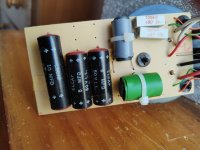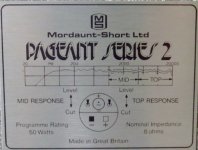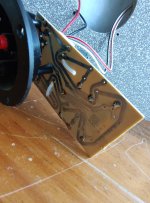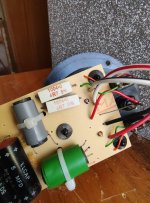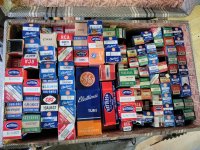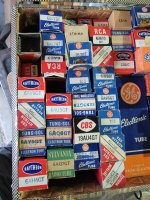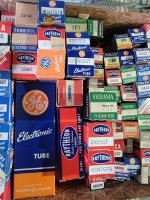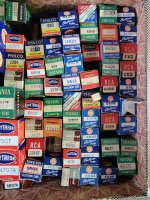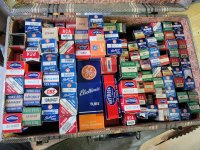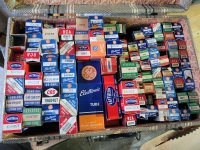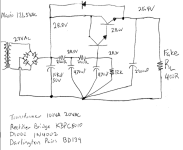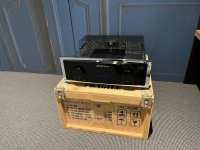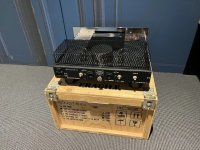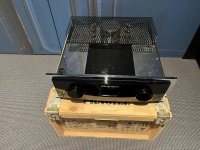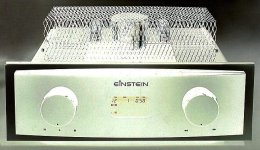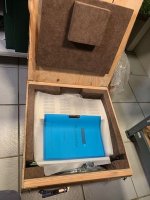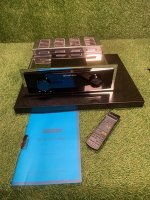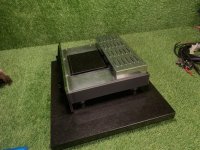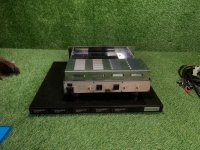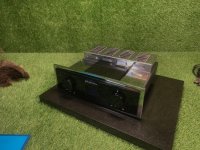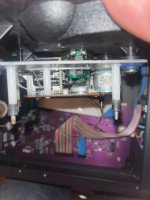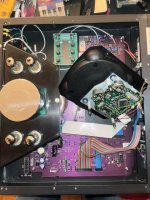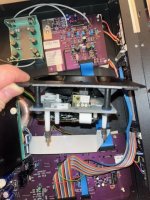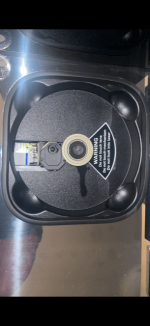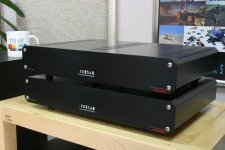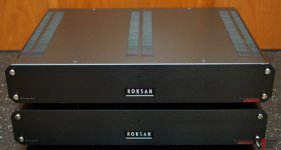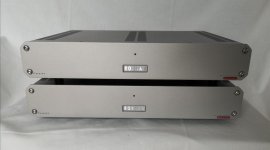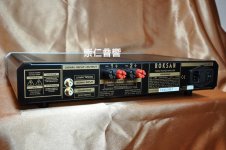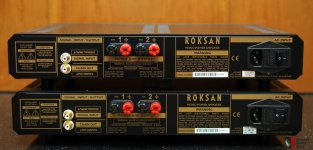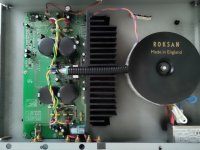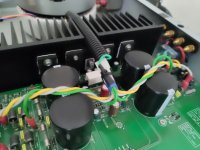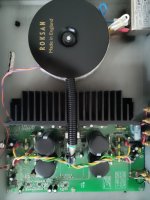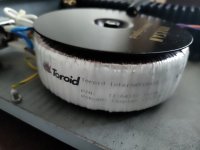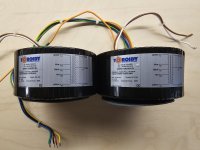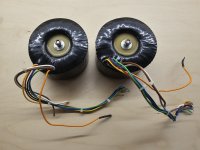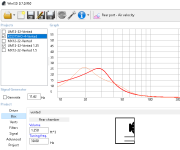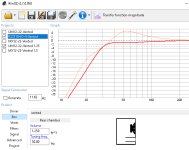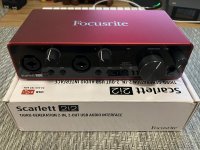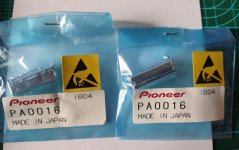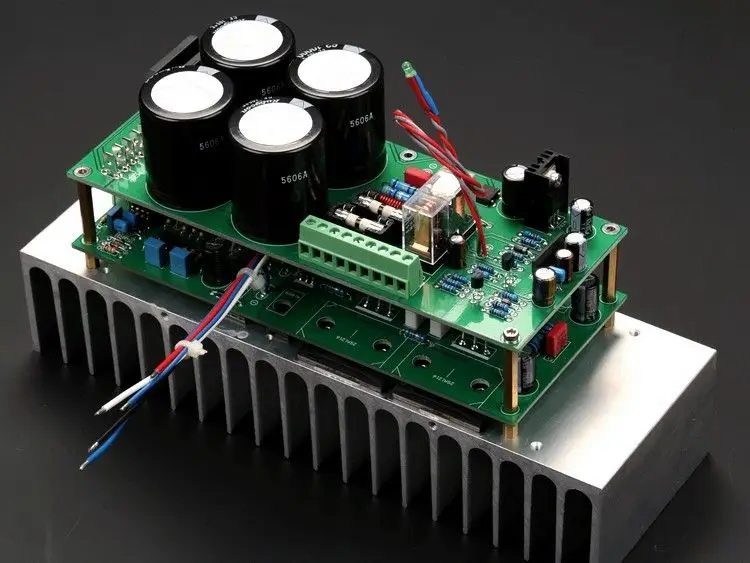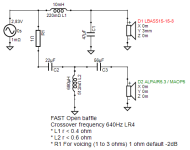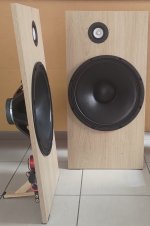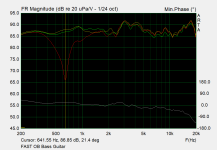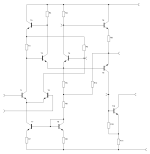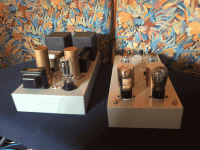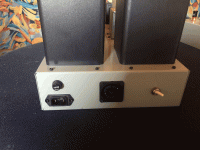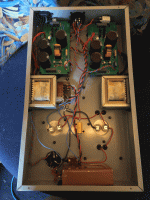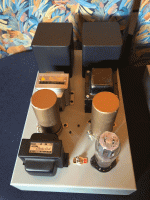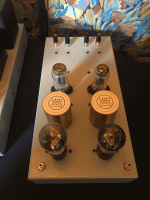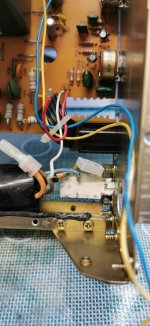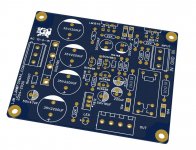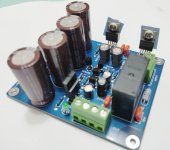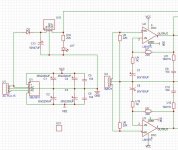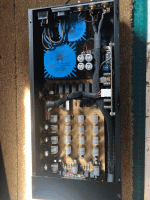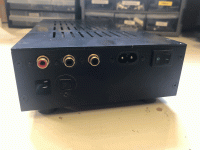Well a while ago I did an intro thread kind of told everyone what I got and what I was planning and mentioned my dad and Daniel who are both on the board.
Last year my dad convinced me to get the KEF 107/2 (came with the proper kube too). He also found the exact same Krell KST-100 he once had (which I vividly remember from my childhood).
I am hitting 40 soon while my dad has been at this for 40 years; designing and modifying his own audio equipment, all of which I vividly remember since I was 5.
So after purchasing both, he recapped the KEF 107/2 for me (except the hard to find 240uf caps but they were fine), reformed them, redid the woofer cones and refilled the ferrofluid.
I finally brought them into my home in the new year and started listening to them
- Minipc for the source (Tidal)
- Portable phone DAC (cheap $100 USB powered from amazon)
- Some cheap bias knob pass through for volume control ($30-$40 on amazon), 4.4mm balanced <> RCA connecting to the DAC and RCA to the amp
The sound was muddy, not enough bass, not clear, I used FX Sound (free windows EQ software), it helped, but it was still 'not right'.
I spent hours playing with speaker position and tweeter direction. In the end the best sound in my space was bringing them as close as possible (KEF recommends 2.4m, mine are wider), over 1/2 meter away from wall and titled/toed in entirely, with tweeters directed towards me so I get a triangle seating position. This was the best I could pull off.
No amount of EQing could get the soundstage or sound to improve further from this, so I kept researching DACs for months, all pricey or bad reviews. Long story short, I got sold on the SMSL SU-1 as an entry united but it was going to take a month to come, SMSL C-100 was here next day (I went through a lot of youtube reviews). Yes I am aware of R2R DACS, even the Gustarted R26, SMSL's R2R DAC, so many other 2k+ options. Even mid-range SU-10, SU-9 Ultra, D400EX, so many options but I ended up going with this, cheap and next day shipping.
Boy... did it wake up the setup, the portable DAC was GARBAGE (obviously), no need for EQ adjustments. It also had 6 filters, kinda useless, except 2nd option was 'warm' and I liked that. Boy big change, but still not 'right'.
Next, I figured, let me get better cables. What I had in place was plain copper wires, chopped at both ends and 'tugged in', with the biwire option also 'tugged htrough' with the plastic sleeves chopped so it passes through the posts.
First thing I got was new cables, banana to spade. Boy it made a difference, I listened to two days and it was nice once broken in, an improvement in sound stage. Right away next I ordered spade to banana bi-wire jumper cables, once again an improvement compared to the chopped copper cables that I used as jumpers.
Then I ordered some RCA cables and connected the Kube, boy, do NOT listen without a Kube, the sound was smoother and more controlled. I played around with the LF and HF knobs and I could hear a difference, initially I increased the LF to the max for impact, but it dulled and caused bass to be boomy.
It still didn't sound 'right'... so I kept reading and realized wait, I have 4 posts on my Krell, so I looked around for better cables and got Full copper oxygen free cables with gold plated bananas on both ends. Connected to the MF/HF posts straight from the amp, it sounded 'warmer and smoother'. Then I did the same with the bass and it sounded 'dull'.
So I was confused, but then I read reviews on these cables (Micca on amazon) and everyone raved about them, so I figured, I am too hasty, give them time to break in, so I listend to the 2.5 days straight and they improved but something was still 'off'.
Tonight my parents came over and while listening he told me to turn down the LF on the kube and set it to the neutral base position, I did and while the image was cleaner it didn't have the impact or oomph and I hated that. It all still sounded dull.
Well yesterday I ordered legs for the speaker spikes to sit into (they come with spikes which a lot of people don't know, the bottom plastics come off). Well I got the nickel plated ones (cheap order from amazon) and installed it with my dad.
HOLY crap, who would think LEGS make this much a difference. Instantly EVERYTHING sounded better I **** you not. Bass was clean, impactful, not boomy. So much details started showing up in the sound image, airy details of instruments, voices, strings, INCREDIBLE.
Since they left, I've been relistening some of my testing music and I am so impressed. They sound PROPER now...
So when people say small details are placebo, no they are not, cables, position of speakers, these spikes preventing resonance and boominess, better control, it all came together.
One last thing is arriving tomorrow, ordered CARDAS XLR jumpers for grounding (as they didn't come with the sale of the KRELL amp). I hear light noise on the right speaker tweeter, my dad told me to get this, so that's next.
That's my update, I love the setup, it is so harmonious, clean, smooth, warm, clear, detailed and impactful, you can hear the air moving, the depth of the stage, which was all missing when a bad dac was in place, bad cables and no proper feet on the KEFs (the plastic was driving everything into the floor).
Anyways for the future plans a better DAC, monoblock aleph amps and perhaps custom enclosures like what my dad once built are all down the line, but tonight everything came so nicely into place. I am blown away how the removal of the plastic bottoms altered the quality of the sound so much. I got goosebumps, it was so satisfying.
